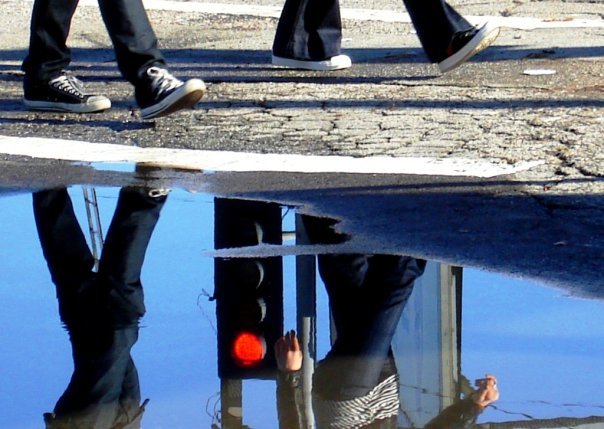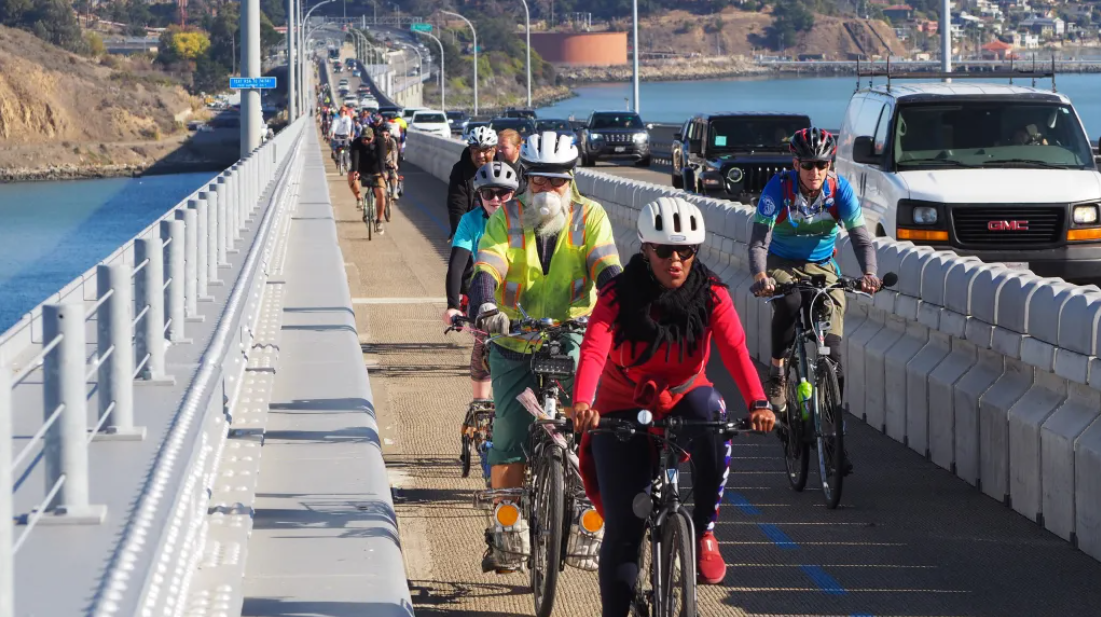We Don’t Appreciate the Vulnerability of Pedestrians Until It’s Too Late
12:04 PM PDT on July 6, 2017

Sahra Sulaiman/Streetsblog L.A.
The light turned red as I approached the intersection at Griffith Park Blvd. and Hyperion Ave. Monday evening. Other than the fact that I couldn't feel half my face after coming from the dentist's office, it was the tail end of a rush hour like any other: people moving fast, people in a hurry to beat lights, people not paying enough attention to each other, and people impatiently honking at one another and cutting each other off. It's a cacophony you pay attention to as a cyclist as a way to gauge how likely people are to pay attention to you. But it's also so commonplace that it can feel rather mundane.
Until it doesn't.
Like the moment I heard screams coming from across the street.
I looked up to see an older woman lying on her back in the intersection, howling.
She had just stepped out into the crosswalk when a woman hoping to make a quick right turn knocked her down with her Honda.
Hoping drivers would heed my panicked arm-flailing, I dashed through the intersection, knelt down by her side, put one hand on her shoulder and held one of her hands with the other.
She squeezed my hand. Hard.
She was lucid, but scared and in pain.
Her head - she had hit her head, she said. And now her ears were ringing and her neck hurt.
"I want to call my brother-in-law," she kept repeating, holding her phone in her shaky free hand. "Tell him I got hit."
I looked up at the driver standing over us - a woman in sunglasses and a shirt bearing the logo of a yoga studio down the street. "I'll call 911," she said.
I didn't know what to make of her.
This is the second time I've come upon a pedestrian lying in the road and the second time where the driver made absolutely no attempt to comfort the person they just ran down.
In fact, as best I could tell, I got to the woman before the driver did, and I had to dash across four busy lanes of traffic to do it. People go into shock when traumatic incidents occur, of course, so they don't always behave the way you expect them to behave. But still, when you see a tiny 58-year-old woman lying in the street, you would think some of your humanity would kick in.
Instead, the driver, now peering back down at us while on the phone with the dispatcher, said she'd hit a lady with her car and that she thought the woman wasn't seriously injured (I think she might have asked where she was hurt), but otherwise did not engage her.
By this time, more people had begun to gather at the corner.
One woman put cones out into the street to try to direct traffic around the victim. Another knelt down with me to help keep her calm. One woman took the victim's phone, called the brother-in-law to let him know she was OK, and then handed the phone back to the victim so she could speak to him. One man leapt out of his car and said he had some training as a nurse. A woman in scrubs also came running over. A family pulled into the gas station behind us and asked if we needed help.
It was, all in all, a tremendously heartening show of love and willingness to take time to come to the aid of a complete stranger. What a hideous and untenable thing, we collectively agreed in pausing our trajectories to render assistance, to see this poor woman so fragile and afraid in the street like this.
Yet data suggests we generally don't appreciate how vulnerable others are or how much power we have to hurt each other until it's too late - and pedestrians and cyclists tend to pay the steepest price for that.
While people walking and biking comprise 14 percent of those involved in collisions with motor vehicles, they are 30 percent of those killed or severely injured. Of the approximately 95 people involved in collisions a day across Los Angeles, at least 13 people on foot or on bike are hit per day, on average (that number is probably higher, given unreported collisions). Which means that this woman was likely not the only one who stepped out into the crosswalk when the light changed, assuming that a driver would respect her right of way that day. She was not the only one who did not expect that a driver's impatience to get out ahead of oncoming vehicles would trump her right to not be run over. And she was not the only one who trusted that a driver would be hyper-aware of the damage a multi-ton vehicle could do to the human body.
It's great that we feel terrible when we see someone hurt, in other words, but it would be better if we were willing to slow down and avoid hurting them in the first place.
I bent to pick up the victim's sunglasses. They had gone flying off her face and into the middle of the street, suggesting she had been hit with some force. The victim herself had been given a neck brace and then eased into a wheelchair by the paramedics. I handed her the glasses and gave her hand a last squeeze. She was still shaking and complaining of pain, even as they wheeled her toward the ambulance.
"My head," she lamented weakly. "My neck."
Stay in touch
Sign up for our free newsletter
More from Streetsblog San Francisco
Commentary: Merchants Are Getting People Killed
The number one local obstruction to curbing traffic violence is commerce and merchant groups.




